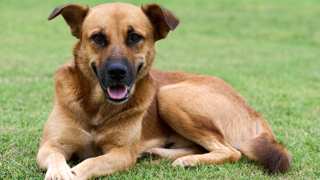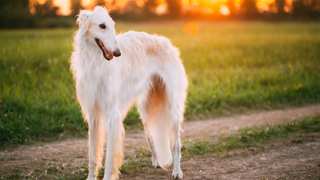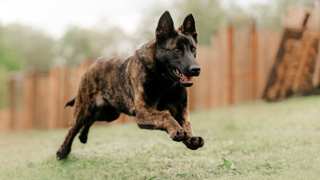The Gaddi dog diet is of utmost importance in keeping these dogs healthy, fit, and long-living. Gaddi Kuttas are big, muscular, and athletic, so they'll need food that has plenty of animal proteins and carbohydrates for energy, plus some omega fatty acids for coat and skin health. Ideally, the best food for a Gaddi is a raw diet consisting of lean meats, fresh fruits and vegetables, eggs, fish, and other protein sources--but many owners find such a diet for their dogs to be too expensive and time-consuming. The most popular and sensible choice among owners is premium dry food, particularly the kind made for large breeds. While more expensive and difficult to obtain, premium food will provide plenty of the above-named nutrients, which a Gaddi will require in order to stay healthy. Owners are urged to not feed their Gaddi dogs only cheap, generic dog food, as it simply doesn't contain enough nutritional ingredients to sustain a Gaddi Kutta throughout its life, and may well shorten the dog's lifespan.
And just how much of this premium food will a Gaddi need each day? Quite a bit of it--but not as much as you'd think. Dogs of this breed have lived for centuries in relatively meager, stark conditions, and have thus developed by not eating as much food each day on average as other similar large breeds. The typical adult Gaddi Kutta, depending on its age, size, and activity level, will need 4-4½ cups of food per day, divided into two meals. A Gaddi puppy, again depending on its age, will need 2½-3 cups per day, divided into three meals (not two) until six months of age. It's a good idea to feed a young Gaddi large-breed puppy food for its first nine months, then you can transition to adult food by mixing the two types for a few days. It's also recommended that you establish a regular feeding schedule for your Gaddi so the dog becomes used to eating at the same time every day.
For further details on feeding a Gaddi Kutta from puppyhood through maturity, see the following chart:
Gaddi Kutta Feeding ChartDog AgeDog WeightFood TypeAmountFrequency2 Months12 lbsDry (Puppy formula)0.4 cups3x/day3 Months25 lbsDry0.6 cups3x/day6 Months45 lbsDry0.8 cups3x/day9 Months65 lbsDry* (Puppy/Adult)1.5 cups2x/day12 Months80 lbsDry (Adult formula)2 cups2x/day14 Months+90 lbsDry2.25 cups2x/day*--Around this time, transition to adult food by first mixing in just a bit of adult formula with the puppy formula. Over the course of a week, with each meal add a little more adult food to the mixture until the dog is eating it entirely.
It's best to try and stick to the above-listed portions; while your Gaddi could probably eat a lot more, a dog of this breed that's constantly overfed can easily become obese. A fat Gaddi Kutta will have joint, breathing, and digestive problems--and carrying around the extra weight may shorten its already comparatively brief lifespan (10-12 years) even more. You can control your Gaddi's weight in several ways: by maintaining consistent feeding and exercise schedules, by not feeding the dog table scraps, and by not leaving food in the dog's bowl all the time (which allows it to eat anytime it wants). It's better to put your Gaddi's bowl down only at mealtimes, then pick it up 20-30 minutes after the dog begins eating.
If you're worried your Gaddi Kutta is overweight, give the dog this simple test: run a hand along its side, and if you can't feel any ribs, it's diet time. Reduce your Gaddi's daily food consumption by one-fourth, and add an extra walk or play period to its daily exercise schedule.






